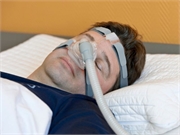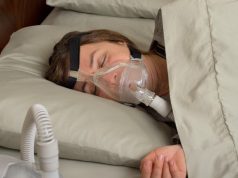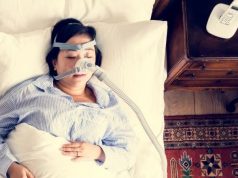Patients with T2DM and OSA diagnosis at higher risk for cardiovascular, microvascular complications
FRIDAY, June 12, 2020 (HealthDay News) — Patients with type 2 diabetes who develop obstructive sleep apnea (OSA) are at higher risk for cardiovascular disease (CVD) and other diabetes-related complications, according to a study recently published in Diabetes Care.
Nicola J. Adderley, Ph.D., M.P.H., from the University of Birmingham in the United Kingdom, and colleagues used a U.K. primary care database (Jan. 1, 2005, to Jan. 17, 2018) to identify individuals (≥16 years) with type 2 diabetes. Diagnosis of OSA after diagnosis of diabetes was assessed. The analysis included 3,667 individuals with a diagnosis of OSA and 10,450 matched participants without OSA.
The researchers found that for patients with diabetes who develop OSA versus those who do not, the adjusted hazard ratio for composite CVD (ischemic heart disease [IHD], stroke/transient ischemic attack [stroke/TIA], heart failure [HF]) was 1.54 (95 percent confidence interval [CI], 1.32 to 1.79). Other hazard ratios were as follows: 1.55 for IHD (95 percent CI, 1.26 to 1.90), 1.67 for HF (95 percent CI, 1.35 to 2.06), 1.57 for stroke/TIA (95 percent CI, 1.27 to 1.94), 1.10 for peripheral vascular disease (95 percent CI, 0.91 to 1.32), 1.53 for atrial fibrillation (95 percent CI, 1.28 to 1.83), 1.32 for peripheral neuropathy (95 percent CI, 1.14 to 1.51), 1.42 for diabetes-related foot disease (95 percent CI, 1.16 to 1.74), 0.99 for referable retinopathy (95 percent CI, 0.82 to 1.21), 1.18 for chronic kidney disease stage 3 to 5 (95 percent CI, 1.02 to 1.36), 1.11 for albuminuria (95 percent CI, 1.01 to 1.22), and 1.24 for all-cause mortality (95 percent CI, 1.10 to 1.40). Among patients with prevalent OSA, findings were similar.
“Patients with type 2 diabetes who develop OSA are a high-risk population, and strategies to detect OSA and prevent cardiovascular and microvascular complications should be implemented,” the authors write.
Several authors disclosed financial ties to the pharmaceutical industry.
Abstract/Full Text (subscription or payment may be required)
Copyright © 2020 HealthDay. All rights reserved.








